MO Tested: Cardo Packtalk Edge Review

A worthy update from the Cardo Packtalk Bold
I remember the first time I really got helmet communicators. I’d been resisting them for a couple of years, and we were in the middle of those heady days between MapQuest directions taped to the tank and the ubiquity of smartphone GPS apps. I’d installed a Bluetooth communicator to my helmet, and despite the fact that the speakers were both too quiet and positioned too far from my ears, being able to navigate to places I’d never been, without having to look down at my tank – in traffic – to see how far I had to my next turn, was a revelation. Since then, I’ve learned the pleasures of riding with a group while testing bikes or being warned of upcoming hazards. Music and podcasts are good mileage eaters when you’re on a multi-state ride – or an Iron Butt. When used smartly, helmet communicators are a real asset to riders. After a couple of years with the entire MO staff using Cardo Packtalk Bolds, I’m pretty familiar with the platform. So, imagine my anticipation when the new heir to the Cardo throne, the Cardo Packtalk Edge, was announced. After living with the Edge for a couple of months, I can say it is a nice improvement over the Bold.
Cardo Packtalk Edge
+ Highs
- Improved sound quality and volume
- Over-the-air firmware updates!
- USB-C connector with fast charging
– Sighs
- Mount (not surprisingly) incompatible with previous generation
- All riders must be using Generation 2 Dynamic Mesh to enjoy benefits
- It will take a while for the mesh technology to trickle down to less spendy units
The Magic Sauce
Just one glance tells you that the Cardo Packtalk Edge is an update to the Packtalk Bold. The design is sleeker and more modern looking while still maintaining the button and jog wheel layout with which users are already familiar. The buttons, however, are subtly redesigned to be easier to feel and operate with gloves. The Bold’s antenna, which was supposed to be flipped up when using mesh communication, was always a wart on the device’s design, and Cardo has eliminated it without affecting the Dynamic Mesh Communication (DMC) range. We’ll talk more about that later.
The unit is waterproof, an essential feature for long rides in the rain. The charging port has been changed from the frustrating micro-USB to USB-C. The increased power delivery offered by the connection means that in a mere 20 minutes of charging, two hours of ride time can be added to the Edge.
Perhaps the coolest new feature of the industrial design is the Air Mount. Simply bring the Edge unit close to the mount on the helmet, and it will leap out of your hand and latch itself securely to the mount without any input from you. Removing the unit requires that a tab on the front of the mount be held down while sliding the unit forward. This takes a little practice to feel natural and only serves to highlight how securely the unit is attached to the helmet.
But it’s what’s inside of the sleek package that makes the Packtalk Edge a better device than the Bold. Cardo has taken the flexible DMC and revamped it to create the Second-Generation DMC. (For people unfamiliar with DMC, it allows riders to enter and exit the mesh without the daisy-chain pairing required by non-mesh systems, meaning that the group is self-healing as riders change their order or get spread out on a ride.) First, pairing no longer requires that one rider be the group organizer. Edge users simply stand near each other, press the communication button for 5 seconds (until the voice prompt announces the entry into pairing mode), and wait just a couple of seconds. Really, it’s that fast! I was astounded the first time I tried it. With the Bold’s gen-one DMC, I found the most reliable means of creating a group was to use the Cardo Connect app on my iPhone, thus avoiding an extended button-pushing session. The DMC update takes care of that. (And no, Bolds cannot be updated to gen two.)
In addition to faster pairing, the new DMC has a wider bandwidth, allowing for higher-quality audio in the intercom, while remaining backwards-compatible with first generation DMC users. Now, I’m certain that some of the improved audio is thanks to the redesigned microphone, with its upgraded noise canceling feature. Also, Cardo has continued its relationship with JBL and their 40mm proprietary speakers, which sound great.
Users of other Cardo DMC products should know that their units have not been made obsolete overnight, and they will be supported through backwards compatibility for the foreseeable future. In fact, both the Cardo Packtalk Slim and the Cardo Packtalk Bold use vanilla DMC and are still being sold. However, if you are looking at the premium units, the Packtalk Bold and the Packtalk Edge, the writing is on the wall, and you should probably invest a little more money ($50) into the Edge for future proofing.
Since a Packtalk Edge communicator needs to communicate to more than just DMC meshes, the Edge also uses Bluetooth 5.2 to connect to both a smartphone and a GPS simultaneously. Additionally, the Bluetooth connectivity allows users who don’t have mesh communications to be bridged into a mesh group. In this case, the range would be limited, requiring the Bluetooth rider to stay near to the DMC rider they were paired to. Finally, the Edge has an FM tuner, allowing you to preprogram to up to six of your favorite radio stations for easy access.
Out in the Wild
After my first positive impression with the speedy pairing, during a Cardo-sponsored press ride in which I was paired with four other riders, my next positive experience was with the audio quality. The sound and clarity of the intercom is markedly better. No, it’s not audiophile quality, but it is much more useable. While Cardo claims the range of the Edge is the same as with the Bold, my impression was that the intercom reached a bit further around hills and corners than before. This is completely unscientific, but it was my experience. As I said before, I don’t know what causes the improved clarity. My educated guess is that it’s a combination of the new microphone, the new DMC technology, and improved audio profiles for the 40mm JBL speakers.
Out on the road, I initially thought Cardo’s claims of higher speaker volume were a bit overblown. They may have been slightly louder, but after I found the High Volume audio profile in the Cardo Connect app, I was singing a different tune. For riders who always wear earplugs, this setting is a must, as is the Automatic Volume setting, which adjusts the audio levels based on speed and wind noise.
Cardo has also updated the Natural Voice control system, allowing you to control the headset with your voice. There is a short list of commands you need to learn, and they are all preceded by “Hey, Cardo.” For example, “Hey, Cardo, battery status” returns the current charge state of the unit. Two other extremely useful commands are: “mute speaker” and “mute microphone.” Since the MO crew can be pretty chatty, I mute the speakers and the mic when I need to talk to someone who is not in the intercom group at, say, a gas station. Finally, both iPhone and Android voice assistants can be contacted with the usual attention words such as “Hey, Siri.” There is a wee bit of a pause you need to insert between the attention getter and the command, but you get used to it very quickly.
Other things I found useful are: First, the Edge connects almost immediately to my phone after being powered on. This is a small-but-noticeable difference that I appreciate. Additionally, regular Edge users will benefit from the battery-level announcement when the unit is powered off. That way, you know if you’ll need to charge it before the next use. Cardo claims 13 hours of talk time, and I have no reason to question that figure. When I traveled Back East for my sport tour in North Carolina and Virginia, I used my Edge all day for directions and music. At the end of 10 hours of riding, the lowest battery level I heard was 25% on one day, with the rest reporting 50%. Now, had I been chatting with someone all day, I expect the level could be lower, but I’m inclined to believe the 13 hour claim.
Upgradeworthy?
So, now, we come to the question of whether Packtalk Bold owners should upgrade to an Edge. My answer would be that it depends. If you’re unhappy with the volume of the Bold’s speakers, there is a case to be made. I did appreciate having the additional decibels at my disposal. If you’re frequently riding long enough to challenge the Bold’s battery capacity (or you’ve run it through enough recharge cycles to notice the inevitable degradation), the USB-C quick charging might be worth the upgrade. Finally, if your riding buddies are thinking about getting Edges, you’ll all need to have them to benefit from the second-generation DMC. Only you can decide if it’s worth the $390 (single unit) or $700 (dual units). However, if you’re looking to buy into Cardo’s top-end line of communicators, the $50 premium over the Packtalk Bold is money well spent. The Cardo Packtalk Edge is a worthy successor to the Packtalk Bold that I’ve been so fond of over the past few years. Unfortunately, this means I’ll have to upgrade the mounting kits that I have on my helmets so that I can use the Edge on all of them. These Second Helmet Kits are not yet available but should be soon. If you’re in the market for a premium helmet communicator, you will be very happy with the Cardo Packtalk Edge.
FAQ
What is the difference between mesh intercom and Bluetooth intercom?
Mesh Intercom allows users to connect and communicate with nearby users in a flexible group that, unlike Bluetooth intercom, does not require that the users maintain the same order within the group. In contrast, Bluetooth Intercom functions as a peer-to-peer communication grouping which locks members in a sequential order to maintain communication within the group. Additionally, Bluetooth intercom requires that the units be paired before beginning intercom communication.
How does mesh intercom work?
Both Bluetooth and mesh technology use radio frequencies to wirelessly connect riders together. However, Bluetooth only sends data to up to two direct connections, meaning one rider can only connect directly to two others. In order to accommodate larger numbers in a group, a daisy chain is created to make the connections. The problem with this method is that if one member in the middle of the group drops out, it can disrupt the entire chain. Additionally, for optimal Bluetooth group connections, everyone needs to stay in the same order as they are connected while riding. Mesh creates a web of connecting links between everyone in the group, which since the mesh is self healing, allows riders to change order within the group or leave it altogether without disrupting the rest of the group. Later, if the rider rejoins the group, they are seamlessly re-integrated into the mesh.
Is Cardo better than Sena?
Both Cardo and Sena produce premium motorcycle communicators and, as a result, are two of the most popular platforms. The way to determine which brand is for you is to see what brand and model your riding buddies own and purchase that brand to maintain mesh compatibility. If you are just starting out, compare the features offered by each brand and see which aligns with your plans the best. Just make sure that you and your riding buddies all purchase the same product for maximum compatibility and ease of use.
Additional Resources
Best Motorcycle Helmet Communicators For Group Rides
MO Tested: Cardo Freecom 4x Review
We are committed to finding, researching, and recommending the best products. We earn commissions from purchases you make using the retail links in our product reviews. Learn more about how this works.
Become a Motorcycle.com insider. Get the latest motorcycle news first by subscribing to our newsletter here.

Like most of the best happenings in his life, Evans stumbled into his motojournalism career. While on his way to a planned life in academia, he applied for a job at a motorcycle magazine, thinking he’d get the opportunity to write some freelance articles. Instead, he was offered a full-time job in which he discovered he could actually get paid to ride other people’s motorcycles – and he’s never looked back. Over the 25 years he’s been in the motorcycle industry, Evans has written two books, 101 Sportbike Performance Projects and How to Modify Your Metric Cruiser, and has ridden just about every production motorcycle manufactured. Evans has a deep love of motorcycles and believes they are a force for good in the world.
More by Evans Brasfield
















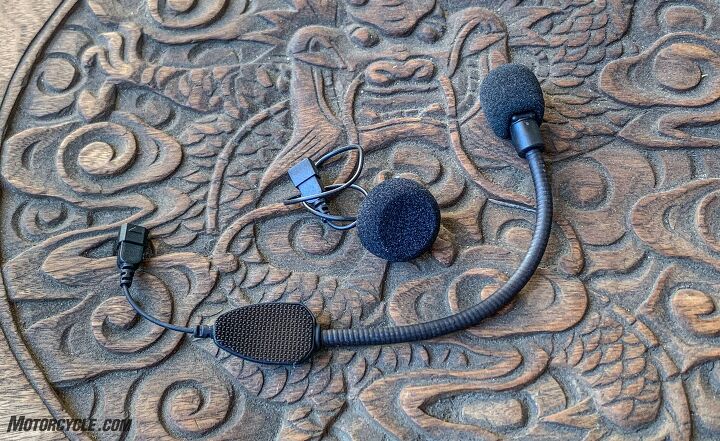









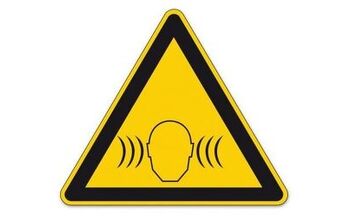
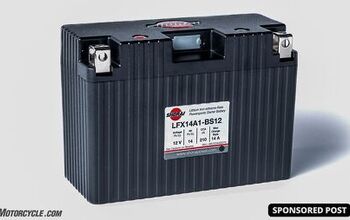









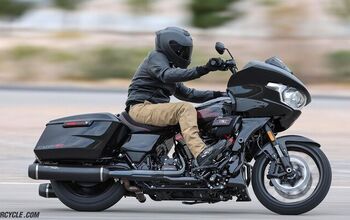


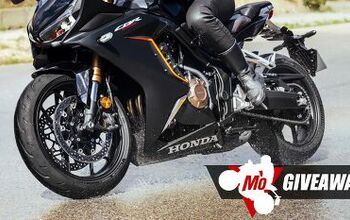


Comments
Join the conversation
5 years with a pair of Cardo Packtalks. They have worked flawlessly every day (commuting and audio), in mesh on long trips with my wife on her bike, or my friends on theirs, and the best is people on phone calls don't realize you are on the bike.
If you need proof of how good these are, check out Ryan F9's comparisons on Youtube.
The sound is better, but there is a downside to the Edge, it will not connect in a Mesh group created by users with Bold, so in this way it is not backwords compatable, this is IMHO a big minus.